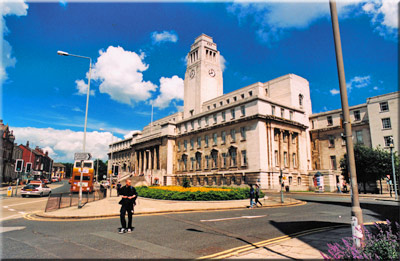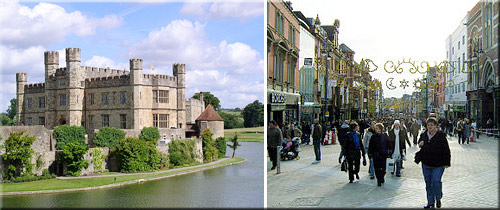Short history of Leeds
 Leeds history begins with a small Saxon village with a population of 200 people. And this was exactly in 1086. Leeds became already famous in the XIII century for the production of wool. One of the main events was the local market which was organized once a week. It attracted a lot of traders from other towns and the entire United Kingdom. Currently Leeds has more than 714 thousand inhabitants.
Leeds history begins with a small Saxon village with a population of 200 people. And this was exactly in 1086. Leeds became already famous in the XIII century for the production of wool. One of the main events was the local market which was organized once a week. It attracted a lot of traders from other towns and the entire United Kingdom. Currently Leeds has more than 714 thousand inhabitants.
Leeds has a quite strategic location. It is situated between Edinburgh and London and that is at the heart of the country.
Leeds is also the commercial capital of Yorkshire, and one of the fastest growing cities in the country and has undergone a radical transformation in recent years.
The city developed so quickly thanks to textile and other light industries. For many years it was the country leader in exporting textile materials and removals to France from Bradford and Germany.
Unfortunately most of the large textile factories were closed in the XIX century.
There are plenty of museums and art galleries in Leeds: Abbey House, City Art Gallery, Harwood House, Kirkstall Abbey or Armouries Museum.
Leeds residents are fairly industrious people and they do not mind to spend their free time in the countryside and in urban recreation areas. The evidenced can be easily found by going to one many and popular parks: Canal Gardens, Golden Acre Park, Middleton Park, Roundhay Park and Tropical World.
Basic information about Leeds
Leeds is the English county of York. It is connected with a canal with Liverpool. The canal is called Leeds-Liverpool canal. The building was started in 1770 and was completed in 1816. Its length is 204 km.
It is known due to the river Ayr, 750 thousand of inhabitants, technical and medical school. It is also the centre of England woollen industry, steel plants and machinery.
 Leeds always was the main city of West Yorkshire in the UK. It is situated on the River Ayr. Until 1086 the city was only a small agricultural town. By the 17 century it became the largest supplier of wool fabrics in England and Europe.
Leeds always was the main city of West Yorkshire in the UK. It is situated on the River Ayr. Until 1086 the city was only a small agricultural town. By the 17 century it became the largest supplier of wool fabrics in England and Europe.
The industrial revolution only increased the scale of production and the metropolitan territory. It used to be one of the biggest suburbs of mining which contributed to the development of the railway infrastructure in the area creating even more vacancies. Plenty of available job offers attract a lot of migrants from the entire country. 1000s of people were moving to Leeds each week so the city quickly grew into an industrial centre. Due to a lot of movement to and from the city quite a large number removal firms in Leeds were established. Some of them still exist and from small local firms they changed into nationwide firms providing also removals in Bradford and all UK.
In the early 20th century three universities were opened in Leeds. During World War II, Leeds became a hospital and a centre for arms production.
Today, apart from the traditional agriculture and manufacturing, Leeds has a highly developed tourist infrastructure that brings the city even more money than any other company. Travellers can find here the Royal Armouries, which stores a huge display of chivalry and modern technology. If you like city brakes we can recommend a visit to the Henry Moore Sculpture Centre, where you will have a great opportunity to learn the traditions of architecture and sculpture in England.
Check also Greetland.


